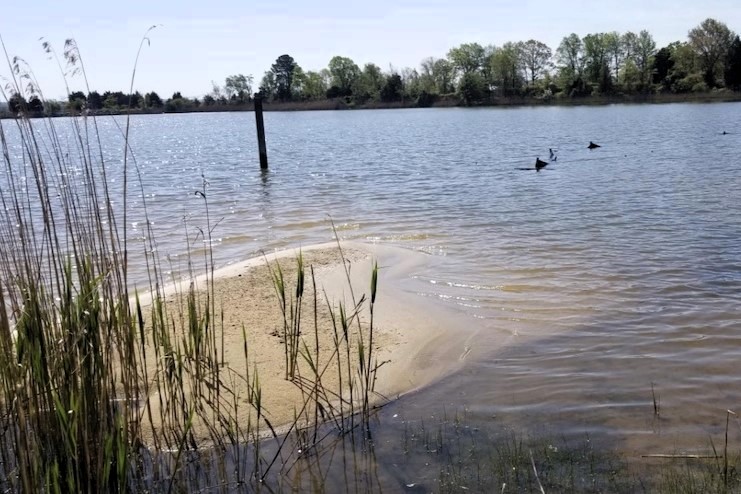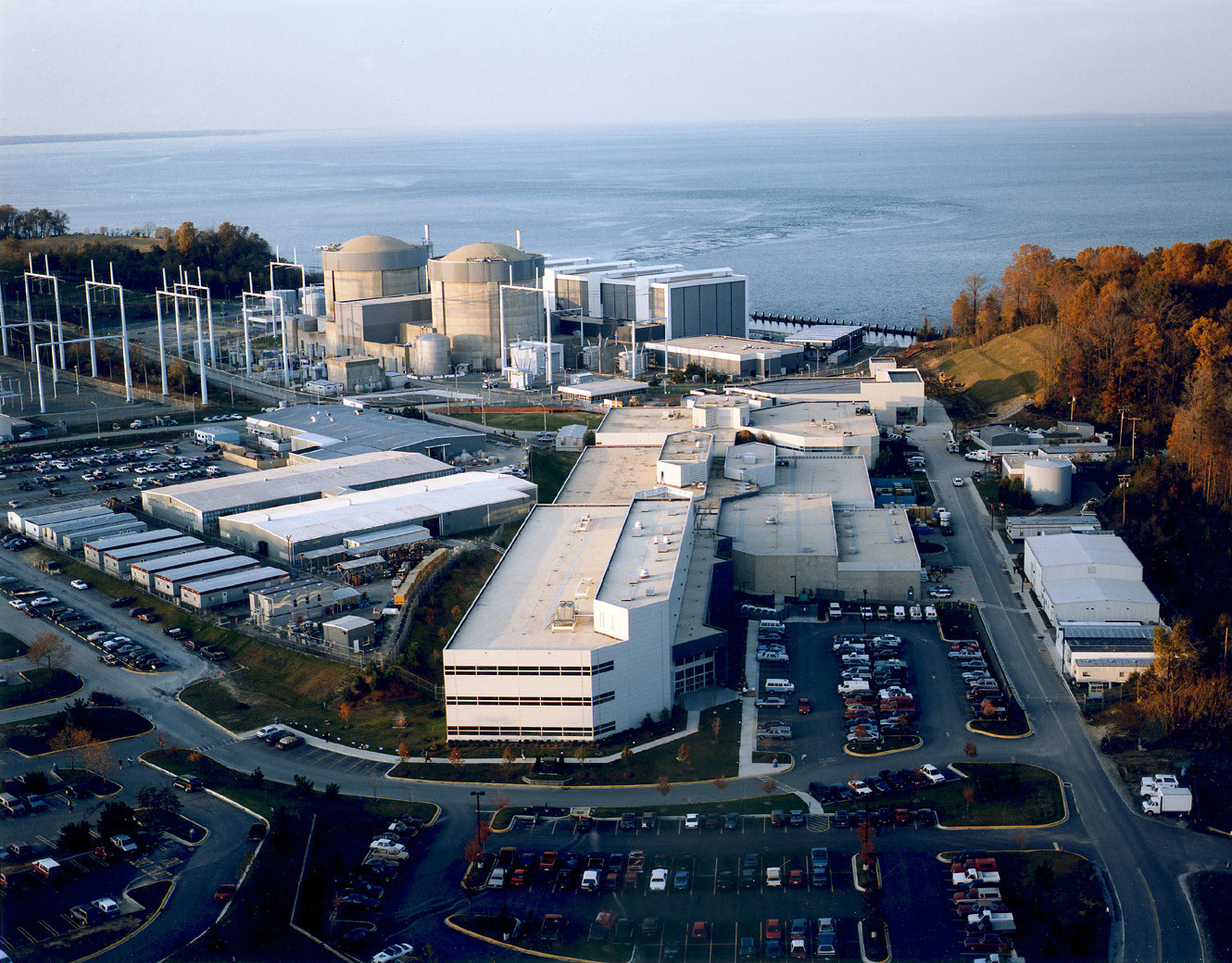Eagle Harbor activists hope federal aid will help boost environmental restoration

By Shifra Dayak
James Crudup has vivid memories of traveling to Seagull Beach in Charles County during his teenage years.
“I remember that water being just as clear as if we were in Florida…that’s the way it was back then,” Crudup said. “Now you cannot see. Now the water is so dark and dirty and is really filthy.”
For Crudup, this type of degradation hasn’t just been visible at Seagull Beach.
Air, water and soil contamination have also made their way across the Patuxent River, touching not only Charles County but also Eagle Harbor, the 70-person town where he served as mayor from 2011 to 2021.
The town has seen air pollution and subsequent disproportionate health impacts, increased stormwater runoff and other environmental impacts over many years.
Most of those impacts, according to Eagle Harbor’s residents, have come from the Chalk Point Generating Station. The plant, formerly owned by NRG Energy, has been owned by GenOn Holdings since 2017. The plant sits on the banks of the Patuxent River in Aquasco, which surrounds Eagle Harbor, and until June 2021, it burned coal.
“It was a really, really a nasty situation in the air,” Crudup told Capital News Service. “Eagle Harbor has been neglected for so long when it comes to environmental issues. We never had any interaction with the county or the state with regards to trying to improve environmental conditions.”
Progress on the issues was further complicated by the town’s small size and lack of economic clout compared with other Prince George’s County localities, many of which are wealthy and packed with businesses.
But now, with a new federal grant from the Environmental Protection Agency, Eagle Harbor’s activists are hopeful that they can forge ahead with community-led environmental monitoring and restoration.
The $370,775 grant will aid Ridge to Reefs, an ecosystem restoration organization, in collecting data on water quality, heavy metals in soil and contaminants in local species like blue crabs. Despite impacts from the Chalk Point plant, not much formal monitoring has been done in Eagle Harbor thus far, according to Paul Sturm, the founder of Ridge to Reefs.
Ridge to Reefs will collect the data through a partnership with Green Mechanics Benefit, an ecological engineering startup based in Prince George’s County. The grant comes from the EPA’s Environmental Justice Collaborative Problem-Solving Cooperative Agreement Program.
“I think we’re really anxious to understand the challenges that the community has and then to really try to work together with the community to come up with a blueprint for improving conditions,” Sturm said. “This is an opportunity for a kind of rebirth of this community.”
That rebirth has been a long time coming, several Eagle Harbor community members said.
Historic Black Town in Prince George’s County Confronts Power Plant for Contributing to Flooding
Potomac Electric Power Company opened the Chalk Point power plant in 1964, 35 years after Eagle Harbor became an incorporated town. The plant was the first coal-fired power plant built on a tidal waterway, according to Fred Tutman, the riverkeeper for the Patuxent River.
To many of the residents, the plant’s operation represents a fate they’ve been subjected to for too long. Eagle Harbor is a historically Black town, and polluters have capitalized on that, Noah Waters, Eagle Harbor’s current mayor, said.
“This is quite significant, what’s been going on in this area,” Waters said. “This plant was built in 1964. African Americans in Prince George’s County didn’t have political clout to stop anything.”
In 2021, GenOn Energy Holdings shut down the plant’s coal-fired units, citing unfavorable economic conditions.
But the plant still burns natural gas and oil. According to Waters, there’s a misconception that the coal fired units’ closure remedied environmental issues that the town faced.
“It’s out of sight, out of mind. People think it’s okay because you obviously don’t smell it and you don’t see the particulate matter,” Waters said. “But the burning of gas is many times more insidious, because you can’t see it and it’s more detrimental, probably, to the ozone.”
Burning natural gas yields fewer greenhouse gas emissions than burning coal, according to the Natural Resources Defense Council, but gas has its own hazards, including high emissions of methane, a potent climate pollutant.
Despite the end of the town’s involvement in coal combustion, pollution has still persisted.
Eagle Harbor is in the 79th percentile for wastewater discharge, according to the EPA’s environmental justice index, which combines environmental and socioeconomic factors.
Coleman Creek, an important natural resource, sits in a forested area in the southern section of the town. But the creek’s role helping to manage stormwater is in limbo after wastewater discharge and runoff from the Chalk Point plant caused the creek to overflow in recent years, Crudup said.
Representatives from NRG Energy and GenOn did not respond to requests from CNS for comment about the Chalk Point plant.
Eagle Harbor’s 2025 sustainability plan, created when Crudup was in office, outlines several proposals to improve environmental conditions in the town, including stabilizing Coleman Creek’s banks and getting rid of failing septic systems across the town.
Pollution from the plant and from climate change has also impacted the Patuxent River, which the town has also aimed to address in its sustainability plan, with projects for riverbank cleanup and increasing river access for residents.
About 20 years ago, Crudup said, the river saw a buildup of sludge caused by pollution from the coal-fired plant, which made it difficult for boats to pass through and dangerous for people to swim.
Pollution impacts could also be affecting seafood — a central facet of Eagle Harbor’s culture and economic aspirations. Sturm said Ridge to Reefs’ data collection through the grant will aim to pinpoint how contamination in species could affect residents.
“We want to also understand the concerns for residents in terms of the fish and oysters and crabs and things like that,” he said. “We want to understand what people are eating from that local environment, and then also understand what should be tested.”
NRG Energy has faced legal action for previous pollution violations at the Chalk Point plant.
After the Patuxent Riverkeeper organization and Maryland Department of the Environment brought a lawsuit in 2016, the energy corporation was ordered to pay $1 million in penalties for exceeding air and water pollution limits between 2010 and 2013. NRG also committed to performing an additional $1 million worth of environmental restoration projects, including improving its wastewater treatment technology.
“Power plants have a responsibility to keep Maryland’s rivers, skies and lands clean as they strive to provide affordable and reliable energy,” Ben Grumbles, who was Maryland’s environment secretary from 2015 until 2022, said at the time of the settlement.
But such legal action hasn’t been enough, according to Eagle Harbor residents.
And often, high-profile environmental successes in the community have led those who have lived in the town for years to feel overlooked and unheard, Tutman said.
“If there’s an environmental success that Sierra Club or [Chesapeake Climate Action Network] or someone takes credit for, that they don’t necessarily share credit with the people who actually live there, which I think denigrates and minimizes the voice, the ability and the capacity of people in those areas to speak on their own behalf,” Tutman said.
Tutman said he has often run into people wanting to participate in Eagle Harbor’s environmental restoration without taking time to learn about the town or its residents. It’s important that restoration works stays community-centered, he added.
Ridge to Reefs and Green Mechanics Benefit hope their grant-funded data collection will do just that, Larry Davis, a lead consultant for Green Mechanics, said.
“We want to make sure that we are engaging with the community in such a way that the community provides a list of items that they’re interested in,” Davis said.
To Waters, the upcoming monitoring won’t solve all the palpable issues that Eagle Harbor faces from Chalk Point’s pollution. But he’s excited that it’s a step forward, he said.
Tutman echoed the same sentiment. He’s hopeful that environmental work going forward can preserve the community’s strong ties, he said — both to each other and to the natural resources that have defined their identities.
“It’s very much a community. They pray together, they break bread together,” Tutman said. “I just hope these people retain that organic sense of being connected both to the river and to each other.”



